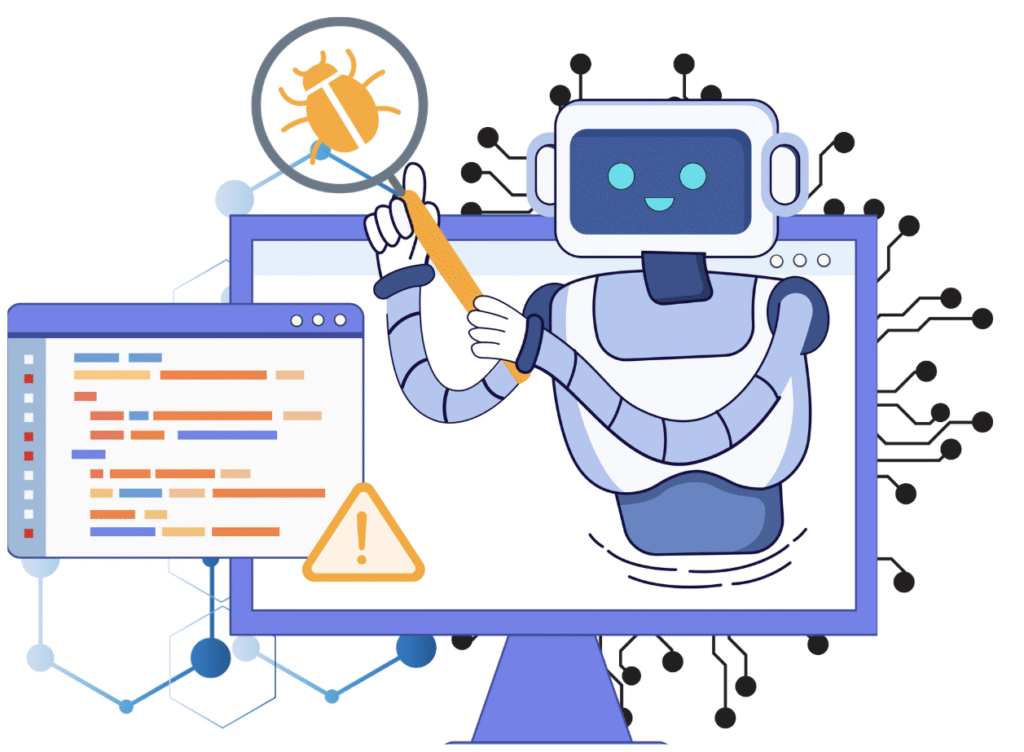Today’s user interfaces (UIs) are no longer static. From SPAs (single-page applications) to progressive web apps, modern UIs update in real time, interact with APIs, and often modify the DOM without triggering full page loads. While this complexity delivers seamless user experiences, it presents significant challenges for automated end-to-end (E2E) testing. Traditional test scripts frequently fail when elements move, load asynchronously, or change their attributes—leading to fragile tests, false positives, and rising QA costs.
This is where artificial intelligence is starting to play a critical role. By introducing automation tools that adapt to context, learn from past executions, and interpret UI behavior dynamically, AI strengthens testing accuracy and scalability. QA teams that integrate advanced E2E testing strategies powered by AI can better maintain test stability in dynamic environments, reduce manual intervention, and gain meaningful insight into test coverage quality. Below, we break down how AI transforms E2E testing into a smarter, more resilient process.
How AI Strengthens the Technical Foundation of E2E Testing
AI-powered testing platforms bring adaptability and intelligence to the most fragile parts of the testing process. Whether it’s adjusting to layout changes or waiting intelligently for asynchronous content to load, AI helps QA teams address common pain points that disrupt conventional test automation.
Self-Healing Test Scripts Prevent Unnecessary Failures
One of the most frustrating aspects of E2E testing in dynamic UIs is the way simple front-end changes can break dozens of test cases. Renaming a button class or moving a field inside a new container might not affect users at all, but it can cause scripted locators to fail. Self-healing technology tackles this problem by analyzing a broader range of attributes—such as role, proximity, element hierarchy, and historical matches—to intelligently re-identify elements when selectors break.
As AI learns from previous test runs, it gets better at interpreting the context of changes. Rather than immediately flagging a failure, it attempts a best-match approach that preserves the test’s original intent. This leads to fewer interruptions in CI/CD pipelines and less manual fixing of test code. Self-healing is not just a convenience—it’s a foundational layer for sustainable automation in dynamic UI environments.
Visual Testing with Contextual Comparison
Visual regressions are notoriously difficult to catch and verify, especially across browsers with varying rendering engines. Traditional visual testing tools rely on pixel-perfect comparison, which can trigger false positives due to minor, insignificant visual shifts like anti-aliasing differences or font rendering inconsistencies. AI-powered visual testing moves beyond static images and focuses on interpreting whether a change actually impacts the user experience.
These AI tools apply computer vision models to assess visual content contextually. They understand element boundaries, hierarchy, and relationships, allowing testers to isolate real layout issues—such as buttons being cut off, modals rendering incorrectly, or text overlapping—and ignore harmless cosmetic variations. This makes visual testing far more accurate and scalable across screen sizes and browsers, reducing test noise and improving actionable insights.
Adaptive Waits Improve Timing Precision
Asynchronous behavior is standard in modern web apps. Whether it’s animations, API calls, or lazy-loaded components, timing becomes a major hurdle in test reliability. Hardcoded delays often backfire—either causing tests to fail due to early execution or slowing down the entire test suite with unnecessary waits.
AI-driven adaptive waits solve this by observing live conditions in the UI. These systems analyze whether an element is visible, interactive, and stable in the DOM before proceeding. Over time, they can learn optimal timing patterns and reduce wait overhead without increasing test fragility. As part of advanced E2E testing strategies, adaptive waits allow for dynamic handling of timing uncertainty, making the testing process significantly more efficient and robust.
How AI Improves Testing Efficiency and Business Confidence
Beyond the technical underpinnings, AI also introduces strategic advantages to testing operations. From reducing flakiness to prioritizing the most impactful test paths, AI empowers QA teams to focus their energy where it matters most—improving user experience and application quality.
Early Detection of Flaky Tests
Flaky tests —those that fail inconsistently—are among the biggest obstacles in automation. They slow down development pipelines, increase debugging workload, and undermine trust in test results. AI tools help overcome this by tracking test performance across multiple runs and identifying patterns that indicate flakiness.
Once flagged, these tests can be prioritized for remediation. Some tools even suggest likely root causes, such as dynamic element IDs or environment-specific timing issues. Addressing flakiness early prevents it from cascading into more serious quality or velocity issues. With AI analyzing run histories and success rates, QA teams get proactive visibility into weak points that might otherwise go unnoticed.
Intelligent Test Generation from Real User Behavior
Many test cases are written based on hypothetical user journeys, which may or may not reflect actual usage. AI helps align test coverage with real-world behavior by analyzing user interaction data—such as clickstreams, page views, and conversion funnels. It then suggests or automatically generates test scenarios based on actual patterns.
This ensures that your test suite doesn’t just work—it works in the ways your users are most likely to interact with the application. These AI-generated tests cover edge cases, popular paths, and critical conversion points, leading to better business alignment. It also helps uncover gaps where the current automation may have overlooked important flows or user types.
Smarter Test Prioritization in CI/CD Pipelines
Not every code change justifies running the full test suite. Running all tests for every minor update can slow down delivery and create unnecessary backlog. AI optimizes this by mapping test cases to code coverage data, dependency relationships, and past failure rates to determine which tests are most likely to be affected.
This dynamic prioritization accelerates feedback loops and ensures that the most critical tests run first. For Agile teams practicing continuous delivery, this makes the QA process much more responsive and efficient. You reduce redundant test runs and improve overall resource usage—without sacrificing coverage or quality.
Conclusion
Testing dynamic UIs with conventional E2E methods often leads to frustrating cycles of broken tests, long debug times, and reduced confidence in test results. With AI entering the picture, testing is no longer just automated—it’s intelligent. From recognizing UI changes to predicting flakiness and aligning with real user behavior, AI reshapes the way modern QA teams build and maintain their test suites.
By leveraging advanced E2E testing strategies that include self-healing tests, visual intelligence, adaptive timing, and predictive analytics, businesses can ensure more resilient and scalable testing. This results in fewer false positives, stronger test coverage, and faster, more confident releases. In a world of ever-evolving applications, AI isn’t just a bonus for QA—it’s a necessity for staying ahead.









10 Comments on "How Can AI Enhance the Resilience of End-to-End Tests in Dynamic UIs?"